Futures Rebound From Worst Levels As Oracle Plunges 11% On Cash Burn Fears
US equity futures are lower, as lousy earnings and an ugly capex forecast by Oracle reversed the market euphoria following the "more dovish than expected" Fed rate cut. As of 8:00am ET, S&P futures are down 0.2% but well off session lows, having tumbled as much as 1% earlier; Nasdaq 100 is down 0.4%, reversing earlier losses of 1.5%. In premarket trading, Mag 7 stocks underperform: NVDA -1.7%, META -1.0%, TSLA -1.0%. ORCL plunged 11.2% in premarket trading after cloud sales missed estimates with free cash flow concerns rising again amid a surge in capex at the worst possible time. Bond yields are mostly unchanged; the USD is lower. Commodities are mixed: oil is down -1.4%; base metals and Ags are lower. Bitcoin slipped nearly 2% as it approached $90,000. Today's US economic calendar includes weekly jobless claims, September trade balance (8:30am) and September final wholesale inventories (10am)
In premarket trading, Nvidia leads Mag 7 names lower after Oracle’s report dampened risk appetite in the AI sector (Apple +0.4%, Alphabet -0.2%, Amazon -0.6%, Microsoft -0.5%, Tesla -0.6%, Meta -0.6%, Nvidia -1.4%)
- Ciena (CIEN) soars 11% after the maker of equipment used by telecom companies posted reported adjusted earnings per share for the fourth quarter that beat the average analyst estimate.
- Diamond Hill Investment Group Inc. (DHIL) shares are halted after Genstar Capital-backed First Eagle Investments agreed to buy the boutique asset-management firm for $473 million in cash.
- Eli Lilly & Co. (LLY) gains 2% after a next-generation obesity shot helped patients lose almost a quarter of their body weight in 68 weeks.
- Gemini Space Station Inc. (GEMI) rises 15% after its application for a derivatives exchange was approved by the Commodity Futures Trading Commission, in a move that will allow the company to join the fast-growing field of prediction markets.
- Oracle (ORCL) falls 11% after the company forecast 3Q cloud sales growth below analyst estimates, raising concerns that supply constraints are preventing the cloud-infrastructure provider from converting its large backlog to actual revenues.
- Oxford Industries (OXM) sinks 21% after the owner of the Tommy Bahama apparel brand cut its adjusted earnings per share forecast for the full year, missing the average analyst estimate. The fourth-quarter net sales outlook also missed consensus.
- Planet Labs (PL) gains 17% after the satellite-imaging firm raised its sales and margin outlook, boosted by new and expanded contracts. Recent wins included an expansion to a contract with NATO and a deal with National Geospatial-Intelligence Agency.
Caution toward the AI space returned with a vengeance, with Nvidia Corp. down 1.4% to lead Magnificent Seven losses as Oracle, once viewed as a bellwether of the AI investment boom, sank more than 12% in premarket trading after cloud sales missed estimates and the company lifted its 2026 capital spending outlook by $15 billion to $50 billion.
Oracle’s results pushed worries about tech valuations and whether heavy spending on AI infrastructure will pay off back into focus, reviving concerns that fueled weeks of volatility in November. While the sector has powered the S&P 500’s stunning rally this year, spending fears have prompted some investors to rotate into other areas as the US economic outlook remains robust.
"Markets have grown far more wary of AI-related spending, which is a sharp contrast with mid-2025 when anything hinting at higher capex sparked excitement,” said Susana Cruz, a strategist at Panmure Liberum. “Oracle has been the weakest link in all this, largely because it’s funding a big chunk of its investment with debt.”
In an attempt to reboot excitement in the sector, Microsoft’s CEO said the company will unveil a new model on Friday that is “going to take agents to the next level.”
Oracle’s earnings landed after the S&P 500 closed just shy of a record on Wednesday, lifted by a Federal Reserve interest-rate cut and Chair Jerome Powell’s sanguine economic outlook. Investors had taken comfort in Fed policymakers leaving the door open to more easing next year, even though the quarter-point cut drew three dissents. Traders stuck to bets on two cuts in 2026, even as the Fed’s new projections signaled only one such move.
“The Fed’s ‘hawkish-but-bullish’ cut last night reinforces this: stronger 2026 growth, faster disinflation,” said Florian Ielpo, head of macro at Lombard Odier Investment Managers. “Cuts are continuing, but they’re no longer automatic — and that’s usually a constructive backdrop for equities.”
“The effect of Oracle has been greater than the Fed. This already tells us everything as we’ve been witnessing a strong concentration and one theme — AI — leading the market,” said Alberto Tocchio, a portfolio manager at Kairos Partners. “This doesn’t mean that AI is gone or it’s a bubble, but we need to focus on a wider scale.”
In other assets, the IEA trimmed estimates for a global oil supply surplus this year and next for the first time in several months as demand strengthens and output growth slows. And tariffs are back in focus, with Mexican lawmakers giving final approval for new duties on Asian imports.
Technology stocks dragged Asian bourses lower overnight and looked set to do the same in Europe but the Stoxx 600 is now green. Construction, retail and industrial shares are leading gains. The construction and materials sector outperforms, while utilities lag. Software stocks including SAP SE and Sage Group Plc drop after US tech giant Oracle Corp. reported disappointing cloud sales and a jump in AI-related spending. Here are some of the biggest European movers on Thursday:
- Schneider Electric shares climb as much as 4.4%, the most since July, after the electrical power products manufacturer announced a share buyback program as it targets growing profitability over the next five years.
- Nilfisk shares surge as much as 35%, the most on record, after the cleaning products manufacturer received a takeover offer from Freudenberg Group.
- BNP Paribas Bank Polska shares rise as much as 3.5% to a record high, after the Polish unit of BNP targeted acceleration of loan growth and net income in its 2026-2030 strategy.
- Carl Zeiss Meditec shares gain as much as 8.6%, the most since April, after the German medical technology firm reported earnings which included a beat on quarterly revenues.
- Nordex shares rise as much as 3.9%, on course to close at their highest level since 2007, after Kepler Cheuvreux upgraded its recommendation on the wind-turbine maker to buy from hold.
- RS Group shares rise as much as much as 5.5%, touching their highest levels since February, after JPMorgan upgraded the stock to overweight from neutral, as it sees a better year for European business services in 2026.
- Entain shares slip as much as 4.1% after the gambling firm announced that Chief Financial Officer Rob Wood will step down after 13 years.
- Naturgy shares drop as much as 6.9%, to the lowest level since April, after BlackRock’s infrastructure arm sold a stake in the Spanish company at a 5.4% discount to Wednesday’s closing price.
- SAP shares drop as much as 4.3% to their lowest level since October 2024, after US peer Oracle reported disappointing cloud sales.
- Ceres Power shares sink as much as 15% after Grizzly Research discloses that it’s short the clean-energy technology stock.
- Delivery Hero shares falls as much as 6.6%, putting the firm among Thursday’s worst performers in the Stoxx 600 index, after Citi downgraded it to sell amid increasing competition in the Middle East and North Africa region.
Earlier, Asian equities erased early advances and fell, dragged by a slide in technology shares as disappointing earnings from Oracle Corp. offset optimism over the Federal Reserve’s rate cut. The MSCI Asia Pacific Index fell as much as 0.7%, after rising 0.6% in morning trading Thursday. A gauge of the region’s technology shares dropped 1.7%. SK Hynix declined after Korea Exchange issued an alert on the stock and prohibited margin trading after big gains. Equity benchmarks in Taiwan dropped more than 1%, while those in Japan and South Korea also retreated.
In FX, the Bloomberg Dollar Spot Index is steady. The Aussie dollar is the weakest of the G-10 currencies, falling 0.3% against the greenback after soft jobs data. The Swiss franc is the best performer, rising 0.4% after the SNB left interest rates on hold.
In rates, treasuries are little changed, with US 10-year yields near flat at 4.14% broadly holding Wednesday’s curve-steepening rally that followed the FOMC rate decision. OIS contracts price in around 50% odds of another 25bp rate cut in March. Trading of short-term rate products remains in focus as the Fed’s plan, also announced Wednesday, to buy $40 billion of Treasury bills per month. Yields are 1bp-2bp richer on the day with belly outperforming, steepening 5s30s spread by around 1bp. 10-year yields is near 4.135% after peaking near 4.21% Wednesday, highest since Sept. 4. The week’s Treasury auction cycle concludes with $22 billion 30-year bond reopening at 1pm New York time, following good demand for 3- and 10-year note sales Monday and Tuesday. WI 30-year yield near 4.78% is ~9bp cheaper than last month’s auction, which tailed by 1bp.
In commodities, oil retreated toward the lowest since October, tracking wider losses in risk assets. WTI crude futures fall 1.3% to around $57.70 a barrel. Spot gold drops $15. Silver extended an all-time high past $62 an ounce. Bitcoin is down over 2% near $90,000.
Looking ahead, today's US economic calendar includes weekly jobless claims, September trade balance (8:30am) and September final wholesale inventories (10am)
Market Snapshot
- S&P 500 mini -0.5%
- Nasdaq 100 mini -0.7%
- Russell 2000 mini little changed
- Stoxx Europe 600 +0.1%
- DAX little changed
- CAC 40 +0.4%
- 10-year Treasury yield -1 basis point at 4.14%
- VIX +0.3 points at 16.1
- Bloomberg Dollar Index little changed at 1209.7
- euro little changed at $1.1704
- WTI crude -1.6% at $57.54/barrel
Top Overnight News
- Trump said any deal for Warner Bros. Discovery must include the sale of CNN, a potential wrinkle for Netflix’s bid. As the takeover fight plays out, the political divide grows. BBG
- NEC Director Hassett said the Fed has plenty of room to cut rates and probably will need to do some more, while he added that data could support a 50bps cut and they could definitely get to 50, or even more. Hassett also said a 25bps cut would be a small step in the right direction and that President Trump will make the Fed Chair choice in a week or two.
- US House of Representatives voted 312-112 to pass the USD 901bln defence spending bill
- China now has the biggest power grid the world has ever seen. Between 2010 and 2024, its power production increased by more than the rest of the world combined. Last year, China generated more than twice as much electricity as the U.S. Some Chinese data centers are now paying less than half what American ones pay for electricity. WSJ
- China put rate cuts in play after pledging to adopt supportive monetary and fiscal policy to bolster the economy. It will “flexibly” use interest rate and RRR cuts. Policymakers also plan to step up efforts to stabilize the housing market. BBG
- The BoJ sees limited need for emergency intervention to restrain rising bond yields, a move that runs counter to its effort to roll back stimulus. RTRS
- The SNB kept its interest rate at zero, in line with expectations, judging that a weakened inflation outlook doesn’t yet justify a return to negative borrowing costs. BBG
- Mexico approved tariffs of up to 50% on Chinese and other Asian imports, broadly aligning itself with US efforts targeting Beijing. China urged Mexico to “correct” its unilateral and protectionist practices. BBG
- Mexico’s tariff hike will affect $1 billion worth of shipments from major Indian car exporters, including Volkswagen and Hyundai. BBG
- Rents for Manhattan apartments surged to a record high in November. New leases were signed at a median of $4,750 in the month, up 13% from a year earlier and 3.3% from October. RTRS
- The United States can use other measures to recreate the roughly $200 billion in revenues it is collecting under tariffs based on a 1977 law if the Supreme Court strikes down use of that law, U.S. Trade Representative Jamieson Greer said on Wednesday. RTRS
Trade/Tariffs
- UK pledges an additional GBP 1.5bln for NHS medicines as part of Trump tariff deal, according to FT.
- Britain is to reform the system to speed up investigations into unfair trade practices and is to sharpen trade defences by giving the trade secretary power to direct investigations, according to draft government guidance.
- Mexico approves wide-ranging tariffs of up to 50% on China, according to Bloomberg. China's Commerce Ministry later commented regarding Mexico's tariffs that it will closely monitor the implementation and will further evaluate the impact, while it added that the measures harm the interests of relevant trade partners, including China.
- India's CEA chief economic advisor said most trade issues with the US have been sorted out and will be surprised if there is no deal with the US by March.
- Mexico's tariffs to hurt Indian-made car exports of Volkswagen (VOW3 GY), Hyundai (5380 KS), Nissan (7201 JT) and Maruti Suzuki (7269 JT), according to Reuters Sources. It was earlier reported by Bloomberg that Mexico approved wide-ranging tariffs of up to 50% on China.
A more detailed look at global markets courtesy of Newsquawk
APAC stocks were ultimately subdued after failing to sustain the early positive momentum from the dovishly perceived FOMC where the Fed lowered rates by 25bps to between 3.50-3.75%, as expected, but with a less hawkish tilt than what Wall Street had anticipated, although much of the gains were eventually wiped out as a slump in Oracle post-earnings stoked tech and AI-related concerns. ASX 200 eked mild gains but with upside limited by the latest jobs data, which showed a surprise contraction in jobs that was solely due to a drop in full-time work. Nikkei 225 reversed its opening gains and more amid pressure from a firmer currency and as AI-exposed stocks were hit, including SoftBank. Hang Seng and Shanghai Comp gradually retreated with the mainland not helped by another liquidity drain by the PBoC, while trade-related uncertainty lingered, with China said to have held urgent discussions with major domestic tech firms on Wednesday about whether to permit purchases of NVIDIA’s H200 processors.
Top Asian News
- HKMA cut its base rate by 25bps to 4.00%, as expected, and in lockstep with the Fed.
- China's Commerce Ministry said China has taken measures to grant exemptions on Nexperia chips for compliant exports intended for civilian use.
- China's Foreign Ministry on tensions with Japan said Japanese PM Takaichi's attitude makes it impossible to engage in dialogue.
- China's Commerce Ministry said non-state import quota for fuel oil in 2026 set at 20mln metric tons.
- China holds annual central economic work conference on Dec 10-11th, according to Xinhua; said China is to make use of RRR rate cut flexibly. Will continue to expand domestic demand. Will build strong domestic market. Will consolidate, stabilise economy. Will implement appropriately loose monetary policy. Will implement more proactive fiscal policy. Will maintain yuan exchange rate basically stable. Will step up counter-cyclical and cross-cyclical adjustment. Will optimise fiscal expenditure structure. Will emphasise resolving local fiscal difficulties. Will flexibly use policy tools including RRR, rate cuts. Will actively resolve local govt debt risks, prohibit new hidden debt. Will stabilise property market with city-specific measures. Encourages buying existing homes for social housing.
- Japan's Lower House passes supplementary budget bill for FY2025 to fund new economic policy package under PM Takaichi, according to Jiji.
European bourses (STOXX 600 +0.2%) opened broadly lower, but managed to clamber off worst levels as the morning progressed, albeit marginally so. European sectors also held a negative bias as the open, but now display a mixed picture. Construction leads followed by Autos whilst Tech is weighed down by pressure seen in Oracle (-11% pre-market) after its earnings.
Top European News
- ECB's Makhlouf said he is confident that medium-term inflation will be at 2%.
- SNB maintains its Policy Rate at 0.00% as expected; SNB reiterates it remains willing to be active in the foreign exchange market as necessary. Inflation in recent months has been slightly lower than expected. In the medium term, however, inflationary pressure is virtually unchanged compared to the last monetary policy assessment. Sight deposits held at the SNB will be remunerated at the SNB policy rate up to a certain threshold. Although US tariffs and trade policy uncertainty weighed on the global economy, economic developments in many countries had thus far remained more resilient than had been assumed.
- SNB Chairman Schlegel said the Bank will continue to observe the situation and adjust monetary policy where necessary to keep price stability Banks' sight deposits held at the SNB will be remunerated at the SNB policy rate up to a certain threshold. The low level of interest rates in Switzerland is having an effect via the exchange rate. Mid-term inflation pressure is practically unchanged since the previous quarter. Ready to intervene in the FX market if necessary. Policy continues to be expansionary, and supports inflation and the economy. Cannot say lower CPI outlook makes NIRP more likely.
- ECB proposes expanding the existing small banks regime to include more banks for supervision purposes. Recommends merging bank capital stack into 2 elements; a releasable and a non-releasable buffer. The non-binding pillar 2 guidance would be kept separate, on top of the releasable buffer. ECB design or role of additional tier 1 instruments could be adjusted to enhance loss absorption capacity.
- BoE's Bailey said BoE should not have interest rate risk on its balance sheet, the question is how fast to remove it.
FX
- DXY attempted a recovery from the post-FOMC slump, which saw the index fall to a 98.592 low yesterday before extending lower to 98.537; though the index is now flat. A floor was found during APAC trade as risk began to wane. To recap, the Fed cut rates by 25bps to 3.5-3.75%, as expected, but in a dovish 9-3 vote split - Goolsbee and Schmid voted to leave rates unchanged, while Miran wanted a larger 50bps reduction. In terms of the session ahead stateside, weekly initial jobless claims (for the week of 6th December) are seen rising to 220k from 191k (last week's low reading was largely due to seasonal adjustment factors); continuing claims (for the week of 29th November) are seen ticking up to 1.947mln from 1.939mln. Wholesale sales and inventory revisions are also due today.
- High beta FX (CAD, GBP, NZD, AUD) are all softer, with state-side sentiment also lower following the Fed and Oracle earnings. AUD is the laggard following the Aussie jobs report overnight, which showed a surprise contraction in jobs that was solely due to a drop in full-time work. Little move was seen on China's Economic Work conference readout, which noted that China is to make use of RRR rate cut flexibly. EUR/USD is uneventful around the 1.1700 mark in a narrow 1.1683-1.1707 parameter.
- CHF was unmoved by the SNB rate decision, which was overall as expected with no fireworks (some expected a return to NIRP). SNB kept rates at 0.00% and reiterated its language on FX, that it “remains willing to be active in the foreign exchange market as necessary”. In terms of inflation projections, 2025 was unchanged, whilst 2026 and 2027 were revised a touch lower. The CHF, however, saw mild strength during the press conference, in which he said he cannot say whether a lower CPI outlook makes NIRP more likely. USD/CHF dipped as low as 0.7979 (vs high 0.8001).
- RBI likely selling USD to help INR avert a sharp fall, according to traders cited by Reuters
Fixed Income
- USTs continue to build on the post-FOMC upside; in brief, the FOMC cut rates by 25bps to 3.50-3.75%, as expected, while the vote split was a bit more dovish than expected. For US paper specifically, the Fed also said it will start technical buying of Treasury bills to manage market liquidity, in which the initial round will total around USD 40bln in Treasury bills per month to help manage market liquidity levels. Currently trading in a 112-11 to 112-18+ range, and another leg higher would see a retest of the high from 8th December at 112-19. From a yield perspective, the FOMC sparked a bull steepening, which has continued into today. Now attention turns to a number of US data points, incl. Jobless Claims, Wholesale Sales and then a 30-year auction, which follows on from a strong 3yr and mostly positive 10yr.
- Bunds follow USTs, and are now flat to trade in a current 127.36 to 127.77 range. Newsflow is incredibly light this morning, with price action essentially a paring of some of the upside seen following the FOMC. Elsewhere, UBS analysts recommend a long 10yr Bund trade, target 2.75% yield; said term premia priced by markets are too high – for reference, current 10yr yield is at 2.85%.
- Elsewhere, Gilts remain bid, as UK paper plays catch-up to peers – price action muted and within a narrow 91.22 to 91.38 range.
- Italy sells EUR 5bln vs exp. EUR 4.0-5.0bln 2.35% 2029, 3.00% 2029, 2.70% 2030 BTP
Commodities
- Crude benchmarks have sold off throughout the APAC session and into the European session as risk tone sours across equity markets despite an FOMC cut that was perceived dovish. After opening at USD 58.92/bbl and USD 62.43/bbl respectively, WTI and Brent trended c. USD 1.30/bbl lower to session lows of USD 57.57/bbl and USD 61.20/bbl as equities sold off. The selloff completely reversed Wednesday's gains following the seizure of an oil tanker off the coast of Venezuela.
- Spot XAU peaked to USD 4248/oz early in the APAC session as the metal continued its gains following the dovish FOMC announcement. As the APAC session continued, however, XAU reversed lower as the dollar began to strengthen and equities sold off. In past sessions, XAU has been moving in-tandem with equities despite its safe haven characteristics, perhaps explaining the selloff in the APAC session.
- 3M LME Copper gapped higher and drove higher to a peak of USD 11.72k/t, USD 30/t shy of ATHs, before falling back lower as global risk tone soured. The red metal stabilised at USD 11.58k/t and has since remained in a tight USD 60/t band.
- Russia's Energy Ministry expects oil refining and gas and coal production to remain at 2024 levels in 2025, via RIA.
Geopolitics: Middle East
- US officials discussed hitting the UN Palestinian refugee agency with terrorism-related sanctions, according to sources cited by Reuters.
- US State Department condemned the Houthis' ongoing unlawful detention of current and former local staff of US missions to Yemen.
Geopolitics: Ukraine
- Ukrainian navy drones in the Black Sea struck the "Dashan" vessel that is part of Russia's shadow fleet, while the attack led to the tanker being disabled.
- The EU is looking to reach an agreement by Friday to lengthen the freeze on Russian assets using emergency powers, according to Bloomberg citing people familiar.
- Russia's Lavrov said Russia wants a package of documents on a long term sustainable peace for Ukraine. Should be security guarantees for all sides.
- Ukrainian drones struck Lukoil's oil extraction platform in the Caspian sea, according to SBU source cited by Reuters; oil and gas production halted.
- Russia’s Lavrov said European peacekeepers in Ukraine "will Be A Target ", via Interfax.
Geopolitics: Other
- US seized an oil tanker off the coast of Venezuela, while President Trump said the vessel was seized for a very good reason, and Attorney General Bondi said the oil tanker was used to transport sanctioned oil from Venezuela and Iran. Furthermore, Guyana's government said the oil tanker seized by the US was falsely flying a Guyana flag and that it will take action against the unauthorised use of the Guyanese flag.
- Russia's Kremlin said President Putin plans to meet Turkey's President Erdogan during his visit to Turkmenistan.
- Russia's Kremlin said Russia remains open to investment. It was reported by the WSJ that US companies could invest in strategic sectors from rare-earth extraction to drilling for oil in the Arctic and help restore Russian energy flows to Western Europe and rest of the world.
US Event Calendar
- 8:30 am: Dec 6 Initial Jobless Claims, est. 220k, prior 191k
- 8:30 am: Nov 29 Continuing Claims, est. 1938k, prior 1939k
- 8:30 am: Sep Trade Balance, est. -63.1b, prior -59.6b
- 10:00 am: Sep F Wholesale Inventories MoM, est. 0.1%
DB's Jim Ried concludes the overnight wrap
Last night saw the market rally resume after the Fed cut rates by 25bps, which included enough dovish hints to pare back the hawkish repricing over recent days. So the S&P 500 (+0.67%) closed less than 0.1% beneath its record high, whilst 2yr Treasury yields (-7.7bps) saw their best day in two months. However, that momentum behind risk assets has been lost overnight, as disappointing results from Oracle after the US close pushed their shares down -11.52% in after-hours trading. And in turn, S&P 500 futures are down -0.90% this morning, with those on the NASDAQ 100 down -1.20%. So even as investors were reassured by the Fed’s latest rate cut, familiar concerns about AI are still very much top of mind right now.
In terms of the Fed decision, the FOMC delivered a third consecutive cut that took the target range for the fed funds rate down to 3.50-3.75%. This was a 9-3 decision, with Governor Miran again advocating for a larger 50bp cut, whereas regional Fed presidents Goolsbee and Schmid favoured no change. The cut was accompanied by implicit signals that the Fed could remain on hold in early 2026. For instance, the dot plot showed the median participant only expecting one more rate cut in 2026, while new wording on “the extent and timing” of further rate adjustments signaled a possible pause ahead. Powell also emphasised that the FOMC was “well positioned to wait and see how the economy evolves” as recent easing had brought the policy stance “within a broad range of estimates of neutral”.
However, this cautious guidance was accompanied by several dovish-leaning elements. Notably, the updated economic projections struck a sanguine tone, with real GDP revised higher across the 2025-27 period, whilst 2026 headline and core PCE inflation were revised -0.1pp and -0.2pp lower to 2.4% and 2.5% respectively. The statement also dialed up the tone on the recent uptick in unemployment while Powell sounded a bit more sanguine on upside inflation risks, saying that “inflation has come in a touch lower” recently and that “most of the inflation overshoot is from tariffs”. Our US economists’ base case remains that Powell has now delivered the last rate cut of his tenure as chair, but continued labor market weakness could swing the FOMC to cut again in the next few months (see their full reaction note here).
Away from rates policy, the Fed also announced they’ll begin reserve-management purchases of Treasury bills. Those will start at $40bn a month from next week and are expected to “remain elevated for a few months” before slowing significantly after the April tax payment window. This will mark the first sustained increase in the size of the Fed balance sheet since the Fed ended QE in spring 2022. And it was a slight surprise this was announced at yesterday’s meeting, even if a shift towards more active liquidity management had been expected by early 2026.
After the decision, markets saw the FOMC’s signal as favourable to expectations of a 2026 rate cut. So even though a rate cut is only priced at 20% by the next meeting in late-January, futures currently signal a 52% chance of a cut by March as we go to press this morning. Moreover, there was a dovish shift in the futures curve, with the rate priced by the December meeting down -6.6bps on the day, meaning that 55bps of cuts were priced for next year by the close. In turn, that meant 2yr Treasury yields fell by 5 to 6bps intraday after the FOMC to register their biggest daily decline in two months (-7.7bps to 3.54%), and 10yr yields fell by -4.1bps on the day to 4.15%. That trend has continued overnight as well, with the 10yr yield down another -2.1bps to 4.13%. And this also weighed on the dollar index, which fell -0.44% yesterday to a six-week low.
Although the Fed’s decision helped to support equities, with the S&P 500 (+0.67%) closing just -0.06% below its all-time high, it’s been a very different story overnight following Oracle’s earnings. They reported after the US close, but their revenues fell short of analysts’ estimates, with their share price down -11.52% in after-hours trading. So that’s pushed US equity futures lower this morning, with those on the S&P 500 down -0.90%, whilst those on the NASDAQ 100 have fallen -1.20%.
That more negative trend has continued in Asia overnight, where there’ve been losses across the major indices. So the Nikkei (-0.97%), the Shanghai Comp (-0.75%), the CSI 300 (-0.52%), the Hang Seng (-0.22%) and the KOSPI (-0.20%) are all lower this morning. And those losses have been particularly sharp for tech stocks, with the Hang Seng Tech index down -1.12%. Bond yields have also moved lower, which partly reflects the Fed and the wider risk-off tone this morning, but we also saw Japan’s 20yr auction have its strongest demand since 2020. Moreover, the latest employment data from Australia showed an unexpected contraction of -21.3k in November (vs. +20.0k expected), which has raised doubts about the likelihood of a near-term rate hike by the RBA. Indeed, yields on 10yr Australian government bonds are down -8.9bps this morning, and the Australian dollar is the worst-performing G10 currency, down -0.59% against the US dollar.
Before the Fed and Oracle’s earnings, investors had priced in a growing chance of an ECB rate hike for 2026, which is now seen as a 40% chance. That gave the European bond selloff a fresh dose of momentum, which was particularly clear at the front end of the curve. For instance, the 2yr German yield (+2.2bps) rose to 2.17%, its highest level since the fiscal stimulus announcements were made in March. And that was echoed across the continent, with yields on 2yr French (+2.4bps) and Italian (+1.6bps) debt also at their highest in months. However, the long-end was more subdued, with yields on 10yr bunds (+0.1bps), OATs (+1.2bps) and BTPs (+0.3bps) seeing smaller increases that still left them beneath their closing level on Monday. In the meantime, equities saw a relatively stronger performance, with the STOXX 600 (+0.07%) inching up after three consecutive declines.
On the theme of central banks, yesterday also brought the Bank of Canada’s decision, who held their policy rate at 2.25% as expected. This followed rate cuts at the previous two meetings, but this time their statement said that if the economy and inflation evolved in line with their October projections, then they felt rates were “at about the right level”. In turn, Canadian government bond yields fell back, with the 2yr yield down -6.0bps on the day, whilst the 10yr fell -4.4bps.
Finally, there wasn’t too much data yesterday, although we did get the Employment Cost Index (ECI) from the US for Q3. That came in a bit softer than expected at +0.8% (vs. +0.9% expected), and it was also the slowest pace since Q3 last year. So that helped to ease fears about inflationary pressures, particularly with the year-on-year pace now down to +3.5%, the slowest since Q2 2021.
To the day ahead now, and data releases include the US weekly initial jobless claims, along with the trade balance for September. Otherwise from central banks, we’ll hear from BoE Governor Bailey.
Tyler Durden Thu, 12/11/2025 - 08:39

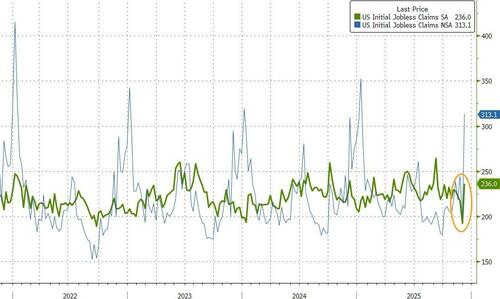
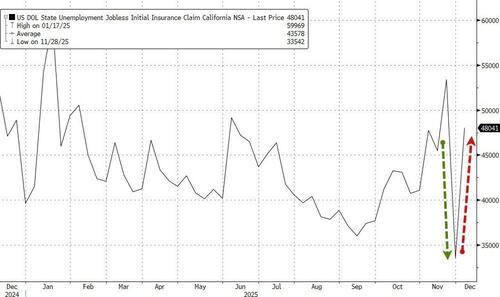
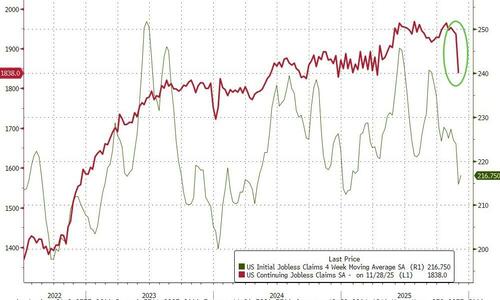
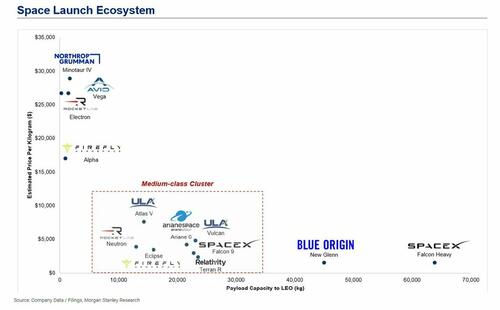
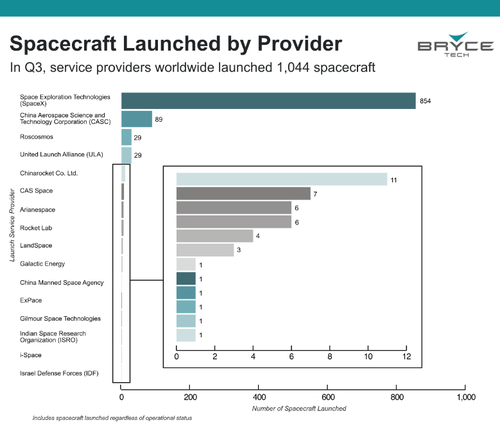
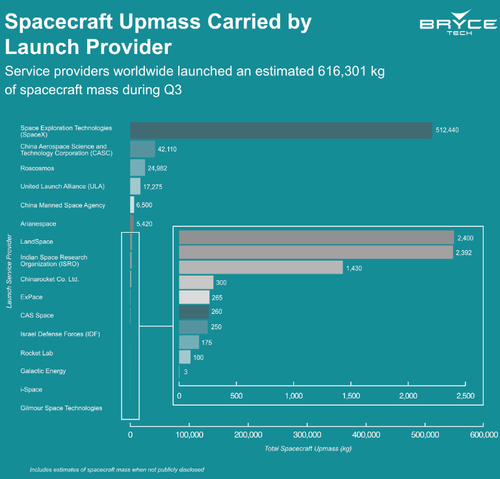



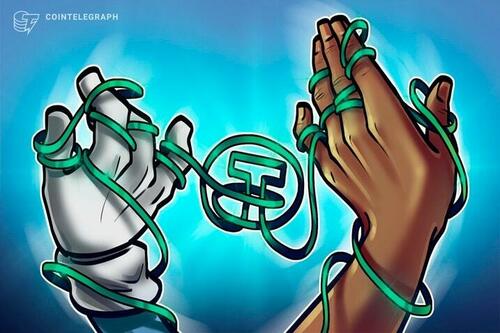

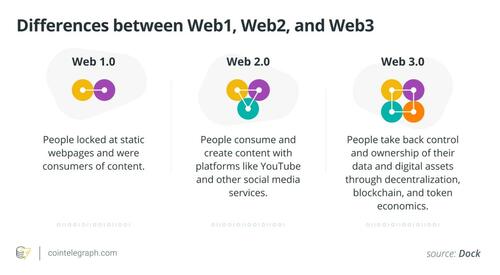

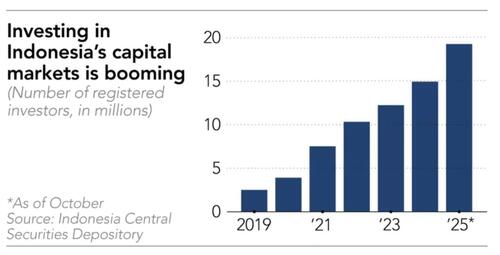
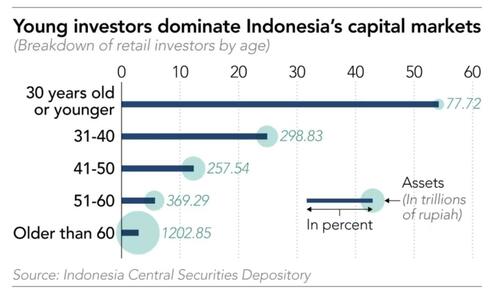
 via Al Jazeera
via Al Jazeera
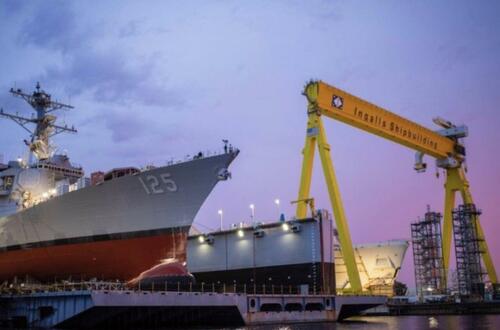

 Source: X/Pastor Jeff Schwarzentraub
Source: X/Pastor Jeff Schwarzentraub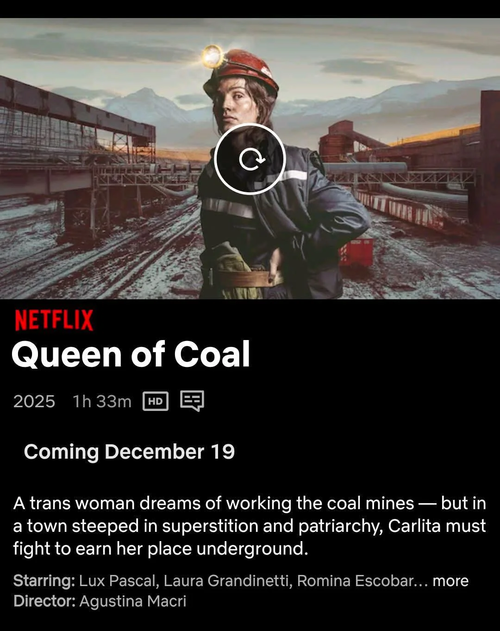

 Rep. Mike Rodgers (R-AL)
Rep. Mike Rodgers (R-AL) Miami mayor-elect Eileen Higgins celebrates at a watch party after winning the Miami mayoral runoff election, Tuesday, Dec. 9, 2025, in Miami. | Lynne Sladky/AP
Miami mayor-elect Eileen Higgins celebrates at a watch party after winning the Miami mayoral runoff election, Tuesday, Dec. 9, 2025, in Miami. | Lynne Sladky/AP
Recent comments